What's going on in goldsmithing Poland ?
The STFZ Informative Bulletin
№ 4 (6) July - August 2005
polish version >>>>
|
The STFZ web site www.stfz.art.pl has been created and exists as result of free volunteer activity of our members. That is why we are sorry for not being able to translate to English all texts in links enclosed, publishing in English just brief information on each of described topic. But please, take a look at the pictures, we believe that with the English texts published they make sensible message on what we do in here. Let us repeat, that we look forward to hear from you on your activities, in order to publish them in our bulletin. Please, forward information on our newsletter to everybody interested in your neighborhood..
|

■ July and August are the months of summer vacations for most of Polish goldsmithing artists.
The galleries are already supplied with works for tourist summer season, and there is still some time left for creation of pieces for competitions organized in autumn. So many of us go for rest.
|
|
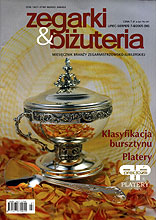
■ In July 2005 the STFZ has started close cooperation with monthly magazine "Zegarki&Biżuteria" - "Watches and Jewellery", edited by the UNIT editing house. The owner is the Ebner Gruppe Ulm, editor of German language Schmuck Magazin (www.schmuckmagazin.de). This gives us an unlimited opportunity of publishing materials on actual events. We are glad that on top of the INFO - an internal STFZ informative bulletin, and our internet bulletin, we also have an access to regulary publishing in the monthly magazine in order to inform on our goldsmithing activities and on galleries promoting Polish goldsmithing art. We are sorry that this new challenge has caused the time delay of editing our internet bulletin "What's going on in goldsmithing Poland". We'll try to do better in the future.
|
|

■
Informing on the monthly magazine "Zegarki&Biżuteria" - "Watches and Jewellery", let us also remind the other domestic publication - magazine "Polski Jubiler" - "Polish Jeweller". This magazine edited every second month publishes informations on goldsmithing events, photos of works, texts important for artists goldsmiths. Information on recent issue - www.polskijubiler.pl.
|
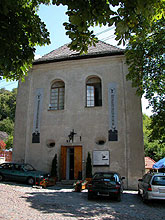 ■ From June 3rd 2005 until the end of September 2005 Grazyna Czarnecka-Majewska and Michal Majewski have been presenting their works at the Muzeum Sztuki Zlotniczej - Muzeum of Goldsmithing Art at Kazimierz Dolny on Vistula river. Artists active in sculpture, medal design, drawing, painting and jewellery have been presenting their goldsmith pieces at the exposition titled "Przestrzen wewnetrzna" - "Inner space".
(www.stfz.art.pl/2005/kaz07.html).
Presently just a small part of the Muzeum collection is exhibited at the building of Dzwonnica - the Bell Tower, which small size determines the exposition. According to the Director and Curator of the Muzeum, Mrs. Aniela Ryndziewicz, there is a real chance for continuation of rebuilding and modernization of the original building of our Muzeum by the Town Market Square. There are also plans of creating the exhibition of reconstruction of the old, classic goldsmith workshop within the Muzeum exposition.
Muzeum web page >>>>
|
|
■ Between July 18th 2005 until July 24th 2005 in Florence, Italy, there's been exposed the exhibition named "Slaskie lato w Toskanii" - "Silesian Summer in Tuscany". The organizer - Galeria Sztuki w Legnicy - The Legnica's Art Gallery has created exposition in order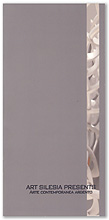 to promote Poland and Polish contemporary culture from the Lower Silesia district.The exhibition consists of paintings, drawings, graphic works and sculptures (ca 50 pieces) created by artists caming from Lower Silesia district plus artistic jewellery pieces by 30 artists goldsmiths from all over the Poland, carefuly collected for years by the Legnica Gallery. to promote Poland and Polish contemporary culture from the Lower Silesia district.The exhibition consists of paintings, drawings, graphic works and sculptures (ca 50 pieces) created by artists caming from Lower Silesia district plus artistic jewellery pieces by 30 artists goldsmiths from all over the Poland, carefuly collected for years by the Legnica Gallery.
This retrospective resumee covering period 1995 - 2005 year creates quite representative picture of recent achievements and development of experimenting Polish jewellery art. All main trends are presented - from geometric forms, that are still actual and developed by our contemporary designers, throught experimenting with new, non orthodox materials used for jewellery creation, up to narrative and conceptual pieces, and jewellery as mean of visual communication. (www.stfz.art.pl/legnica/2005florencja2-a.html).
Images of 34 jewellery pieces are published in the catalog/liflet accompanying the exhibition. (Catalog >>>>).
|
■ Thirteen British jewellery ladies artists - Jane Adam, Laura Baxter, Katie Clarke, Carla Edwards, Katy Hackney, Yoko Izawa, Hannah Lamb, Alison Macleod, Kathie Murphy, Angela O'Kelly, Kaz Robertson, Kayo Saito, Tanja Ufer - have been exhibiting their 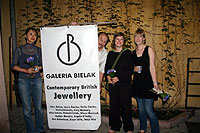 works in Krakow at the BIELAK GALLERY from July 26th of 2005 year. works in Krakow at the BIELAK GALLERY from July 26th of 2005 year.
Andrzej Bielak exhibits at his Gallery (www.galeriabielak.pl) pieces by leading Polish jewellery artists as well as wide range of works by our foreign friends, presenting recent trends in European jewellery desing. After exhibitions from Germany, Sweden, Israel, Russia and Spain we could see pieces from Great Britain. This exhibition is result of cooperation with the London's gallery flow (www.flowgallery.co.uk). The idea of mutual exchange of exhibitions was conceived during visit to Krakow of the owner of the flow gallery; so works by 17 Polish artists were presented at flow in London in May 2005 (www.stfz.art.pl/2005/flow-a.html), and in July 2005 13 British ladies designers have been showing their works in Krakow. (www.stfz.art.pl/2005/ab07-2-a.html)
|
|
 ■ In August 2005 Galeria YES - the YES Gallery has been hosting the next edition of the jewellery exhibition by "GRUPA SZESC" - "SIX GROUP". This group consisting of five artists seems to be speccialy active in last years. The first presentation of the exhibition named "Wobec" (translating as "In front of") took place in March 2005 at the the KINSKY GALLERY in Sopot (www.stfz.art.pl/2005/6a.html). Public of the YES gallery did have a chance of seeing this interesting exhibition in August 2005. ■ In August 2005 Galeria YES - the YES Gallery has been hosting the next edition of the jewellery exhibition by "GRUPA SZESC" - "SIX GROUP". This group consisting of five artists seems to be speccialy active in last years. The first presentation of the exhibition named "Wobec" (translating as "In front of") took place in March 2005 at the the KINSKY GALLERY in Sopot (www.stfz.art.pl/2005/6a.html). Public of the YES gallery did have a chance of seeing this interesting exhibition in August 2005.
|
|
From the past
■ The exhibition CAMELOT 1116 has opened in Krakow on June 20th 1998. We read in the catalog that this sixth in row CAMELOT exhibition was intended as an opening of the the cycle of International Biennale of Artistic Jewellery. But  we didn`t know then, back in 1998, that the CAMELOT 1116 will be the last exhibition of the CAMELOT seria. As we have written already in our bulletines, the CAMELOTS have opened new chapter in history of contemporary Polish artistic jewellery exhibitions. we didn`t know then, back in 1998, that the CAMELOT 1116 will be the last exhibition of the CAMELOT seria. As we have written already in our bulletines, the CAMELOTS have opened new chapter in history of contemporary Polish artistic jewellery exhibitions.
The CAMELOT 1116 exhibition has been presented at:
- The CAMELOT Gallery, Krakow, Sw. Tomasza street 17, from June 20th untill June 24 th 1998 year
- The SKARBIEC Gallery, Krakow, Grodzka street 35, from June 25th untill July 10th 1998 year
- The Muzeum of Goldsmiting Art, Kazimierz Dolny, Rynek 19, from July 12th untill August 31st 1998 year
- Distric Muzeum of Gliwice, Gliwice, Pod Murami street 2, from September 9th untill October 11th 1998 year
- National Gallery of Art ZACHETA, Warsaw, Plac Malachowskiego 2, form October 16th untill October 18th 1998 year
- Gallery of Art of Goldsmithing, Wroclaw, Plac Solny 4, from
October 24th untill November 24th 1998 year
The members of jury of CAMELOT 1116: Barbara Lodzinska, Andrzej Bielak, Zdzislaw Lelek, Joachim Sokolski - Poland, dr. Christianne Weber Stöber - Germany, Christophe Burger – France, have chosen for presentation works by 23 artists, coming from 4 countries. Prizes and awards went to: Dieter Haefke (first prize), Ewa Chycinska-Ogrodowska, Jacek Byczewski, Jacek Kobinski, Achim Gersmann. Ewa Chycinska-Ogrodowska was also distinguished by speccial prize – an invitation to the individual exhibition of her works at the Muzeum of Goldsmithing Art in Kazimierz Dolny.
The artistic evolution of the CAMELOT exhibition was described in foreword to catalog of CAMELOT 1116 by Katarzyna Rzehak.
|
|
■ The Jewellery a’la Polonaise in Summer 1920 in Warsaw
Like every year also this August 2005 we have been celebrating the anniversary of Bitwa Warszawska 1920 – the Battle under Warsaw in 1920 year. The text below explains the connection of this respectable historic event with Polish Artistic Jewellery.
The history of Poland is the history of wars. This might create the impression that the military efforts and affairs were of prime, dominanting interest for Polish society of these times 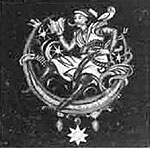 of our struggles for independence and noumerous Polish national upraisings in XIXth and XXth centuries. They say: „Inter armas silent muzae“ – muses keep silent in the noise of war. But it is enough to take just a brief look at Polish culture and art of that time of constant fight to notice the great interest for music of Frederick Chopin, for poetry by our leading poets - national prophets, novels by the Nobel Prize winner Henryk Sienkiewicz, plus paintings by numerous Polish masters. All theses proves the extremely important role played by art, and great need for art, also everyday’s art for the world of our forefathers. Artists those days in Poland were recognized as guardians of national consciousness. of our struggles for independence and noumerous Polish national upraisings in XIXth and XXth centuries. They say: „Inter armas silent muzae“ – muses keep silent in the noise of war. But it is enough to take just a brief look at Polish culture and art of that time of constant fight to notice the great interest for music of Frederick Chopin, for poetry by our leading poets - national prophets, novels by the Nobel Prize winner Henryk Sienkiewicz, plus paintings by numerous Polish masters. All theses proves the extremely important role played by art, and great need for art, also everyday’s art for the world of our forefathers. Artists those days in Poland were recognized as guardians of national consciousness.
One might think that this need for art concerned the pieces of fine arts. But let us remember that the applied arts, reborn at the break of XIXth and XXth centuries, were also of great interest and were enjoyning the high respect and estimee of Poles these days.
Just after becaming independent again in 1918 year, after more then one hundred years of not existance as independent State, the „newborn“ State of Poland has been put under the most severe test. This was the war with Soviet Union in 1920 year. In Summer 1920 the mighty Red Army in it’s march to West has reached the suburbs of Warsaw. The battle under Warsaw, known as „Cud nad Wisla“ - Miracle on Vistula - has ended by the Polish victory in August 1920 year. This victory has tamed the Red Army invasion to the West of Europe. Poland has gained almost twenty years of peace. The victory was result of unbelievable effort of all the nation.
In described situation it might seem that in the year 1920 nobody in Poland, speccialy in preparing it’s defense Warsaw should be interested in art. But:
The magazine “Placowka” translating as “Outpost”, edited in Warsaw on May 15th 1920 year, issue nr 9, on the page nr 230 has published the material quoted below ( with the translator appologies for difficulties with translation of old Polish text into English)
The Competition for Polish Jewels
At the rooms of Towarzystwo Zachety do Sztuk Pieknych - Zacheta for short - translating as: Association for Ecouragement for Fine Arts, there’s been announcement of results of competition for “Jewels a’la Polonaise” (in Polish Style), organized by the (goldsmith and jeweller) company “Wincenty Wabinski and Co.”, residing in the Europejski Hotel in Warsaw, by appointment and with appreciation of the Ministry of Culture and Arts. This competition has been of great interest to everybody, althought it was “closed competition” with personal invitation issued to limited circle of artists choosen by the Ministry. Invited authors have submitted 80 pieces for the competition, and 16 works beside the frames of the contest.
The jury consisted of: representative of Ministry of Culture and Art Mr. Jan Skotnicki, elder of the goldsmiths and jewellers guild Mr. Lipczynski, Mr. Borowski, prof. Lalewicz, Mrs. Handelsmann, Mr. Poltawski, Lt. Szreniawa-Rzecki and Mr. Wincenty Wabinski.
The first prize in quantity of 5000 mark (Polish currency of these days) went unanimously to Mr. Mieczyslaw Kotarbinski for his piece – brooch, showing Lord Twardowski on the Moon. The second prize – 3000 mark went to Mr. Ludwik Puget fot brooche with Polish ornamentation motives; the third prize – 2000 mark has been received by Mr. Bartlomiejczyk for brooch with image of Polish Light Cavalry Rider – The Polish Ulan.
Beside these works, the jury qualified works/designes by L Puget, M. Kotarbinski, Fr. Polkowski and by Mr. Lagowski for purchase for the collection of the Zacheta Association and for further execution in material.
The jury expressed it’s wish that results of this most interesting and unussual competition will be presented to the public. Therefore the exhibition will be opened at the Zacheta Gallery exhibiting rooms.
Awarded pieces were considered as good for reproduction and multiplication in form of expencive jewels as well as in forms of cheap, more popular adornements depending on materials employed – gold or silver and stones and emails. Thus we believe that these first Polish jewels created by the occasion of well concepted competition will became popular.
It is interesting for us today, to learn, how the need for art, including the art of goldsmithing looked like in other countries at the time of danger. We believe that an answer to such question would be an interesting contribution to thoughts and divagation on role of art including goldsmithing in cultures of our societes.
|
|